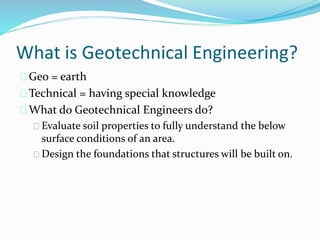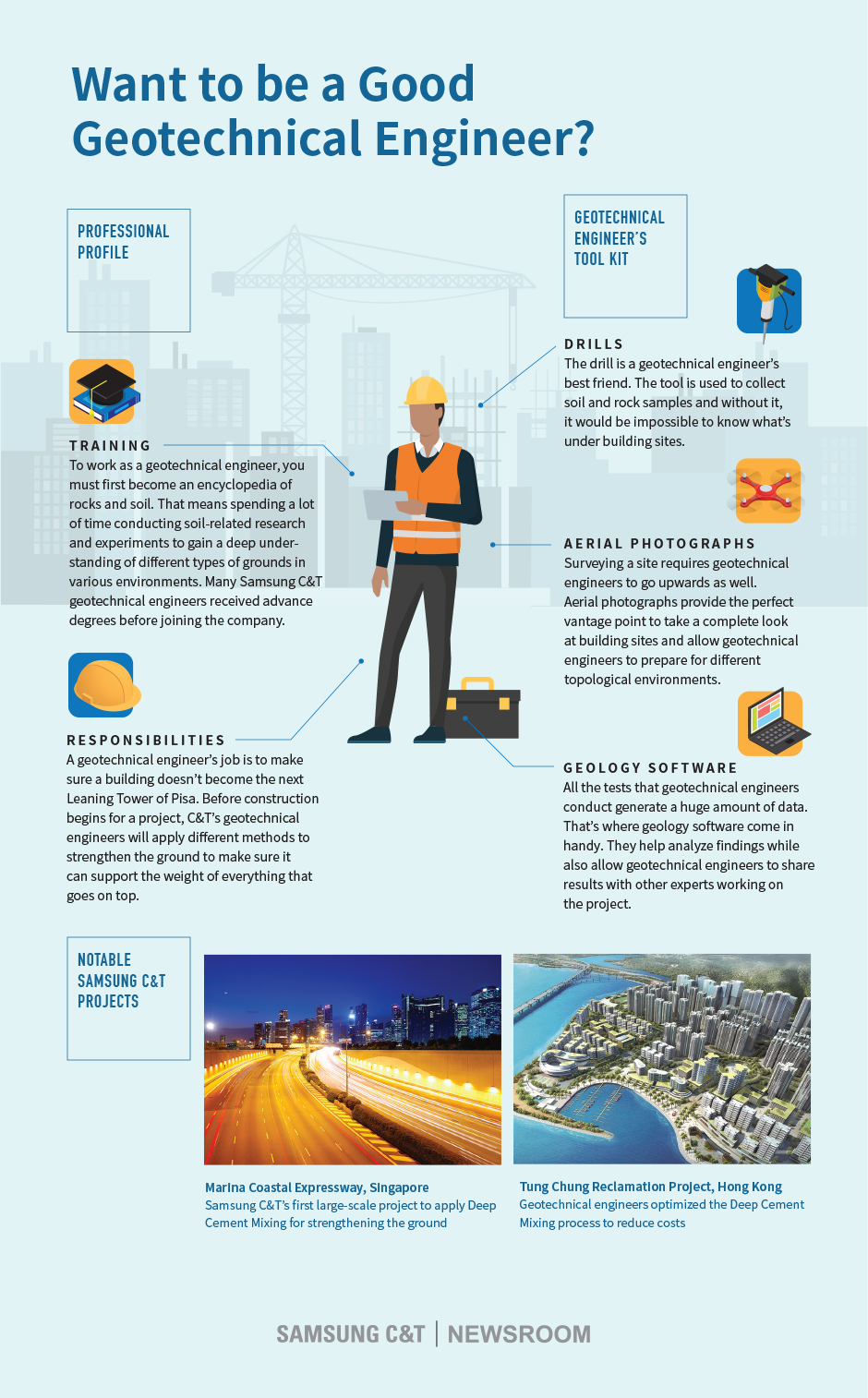Get This Report on Geotheta
Get This Report on Geotheta
Blog Article
More About Geotheta
Table of ContentsSome Known Factual Statements About Geotheta How Geotheta can Save You Time, Stress, and Money.A Biased View of GeothetaGeotheta Things To Know Before You Get This
They work together with civil designers, architectural engineers, designers, and other experts to incorporate geotechnical considerations right into the overall task design and construction procedure. This requires effective synergy, control, and communication to guarantee that the geotechnical facets straighten with the job goals and satisfy governing demands.Mining & Materials Design: Principles of exploration, infiltration rates, and elements influencing the choice of exploration method. Blasting strategies in surface and underground operations. Mechanical and constant techniques to fragmentation, consisting of longwall shearing and fullface boring.
Modelling of piece and particle dimension circulations; comminution as a transfer feature. Comminution modern technology: crushing, grinding, dimension category. Integrated analysis of fragmentation and comminution procedures. Supplied by: Mining & Products Engineering.
Unknown Facts About Geotheta
Bachelor's level programs in civil, geotechnical, geological, and ecological engineering typically last 4 years and consist of general education courses in English, social scientific research, and the humanities, in addition to courses in sophisticated maths, architectural geology, and liquid mineralogy. (https://allmyfaves.com/geotheta?tab=Geotheta)
Geotechnical design entails the assessment of the dirt and rock conditions at a specific website, and their implications for the advancement of that site. As most frameworks rely upon the ground for support, it lacks surprise that a thorough understanding of the ground problems, and the suitability of foundation systems, are important to the lasting security and efficiency of the structure or framework.
Being experts in the examination of geological developments and ground practices, geotechnical designers perform scientific examinations and screening to understand the effect these geological formations might have on the design and building and construction of building, civil and facilities jobs. This competence is critical for the layout and building of structures, roadways, tunnels, dams, bridges, and supply of water and sewer system.
The geotechnical team at Douglas Partners regularly seek advice from engineers, layout designers, programmers, and home builders to make suggestions on style and advancement proposals to make certain that the built structures are appropriately developed for the ground conditions. As an example, the design of footing systems needs to think about the weight of the framework, the capacity of the ground to support that weight along with motion tolerances and efficient building.
The Best Strategy To Use For Geotheta
This task is considerably simplified by the usage of our Douglas Map geospatial system which makes this information readily available in a simple to make use of internet browser user interface. A geotechnical designer will certainly guide the boring of boreholes and test pits to accumulate dirt and other samples, and also assess surface area attributes and ground direct exposures to develop a geotechnical design of the subsurface problems.
Relying on the job type and ground conditions came across, lab screening might to name a few points assess strength, compressibility, reactivity and/or permeability of soil and rock examples. Hereafter information is gathered and collated, the outcomes are used for a geotechnical model of the site, which is usually provided as areas across the site.

A geotechnical investigation naturally can just assess the ground conditions at the areas drilled or excavated. Natural variants in soil and rock problems can happen across a website and between test places. It is as a result great method that the geotechnical engineer be preserved throughout building of the project to give on-site confirmation that the ground conditions come across follow the expectations and advice given in the geotechnical examination report.
The Buzz on Geotheta
Geotechnical engineers use their extensive knowledge of dirt and rock to examine risk and address problems on varied infrastructure projectsGeotechnical design is a specialist branch of civil design which takes a look at the behaviour of earth materials and the application of dirt and rock auto mechanics. Consulting Engineers. As a geotechnical designer, you will examine the physical, mechanical and chemical buildings of soil and rock in order to develop foundations, preserving structures and earthworks
Geotechnical design is carefully connected to and overlaps with, both engineering geology and ground design - https://www.pubpub.org/user/ian-hammond. It's feasible to specialise in geotechnics or benefit a geotechnical firm but be called a design geologist or a ground designer. As a geotechnical designer, you'll need to: develop and maintain connections with customers and other specialists involved in the website, throughout each projectmaintain safety requirements on website bear in mind price implications when you make recommendationsstudy geological maps and airborne photographs from a series of resources and from different time periodsexamine building and construction prepares to see exactly how viable they are based upon your understanding of the siteinvestigate threats or geological hazards for click for more the sitesearch for environmentally sensitive functions, such as garbage dump begin to establish valid and expository ground modelsplan area investigationsdrill and evaluate samples of bedrock, dirt, groundwater and additional materials supervise various other experts on sitesolve technological concerns as they arise, such as unexpected structures at drill sitesmonitor conditions throughout and after building to make certain frameworks are stable in the brief and long termadding information collected on website to your preliminary researchcreating geotechnical calculations, drawings, and two or three-dimensional computer system models translating the datamaking suggestions regarding the proposed usage of the website

Report this page